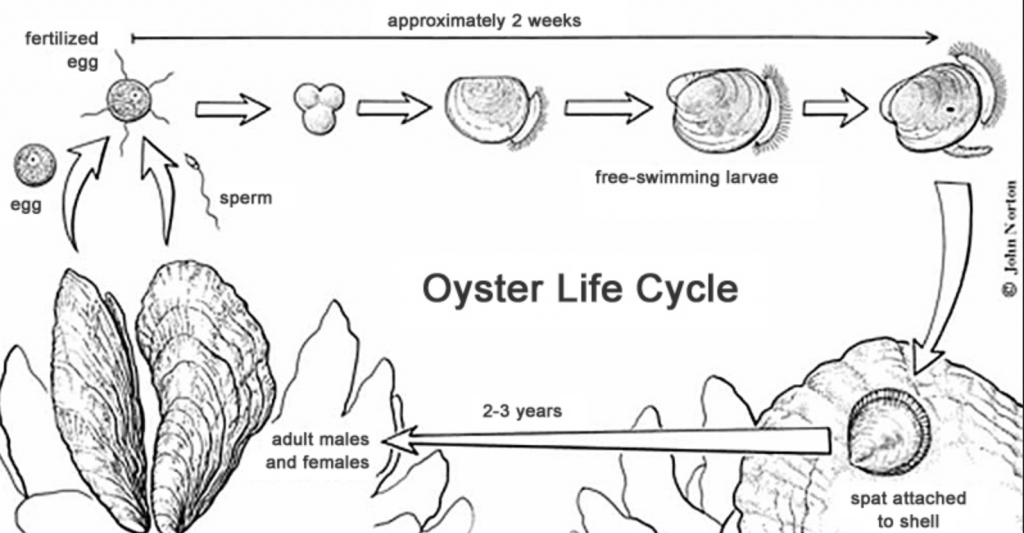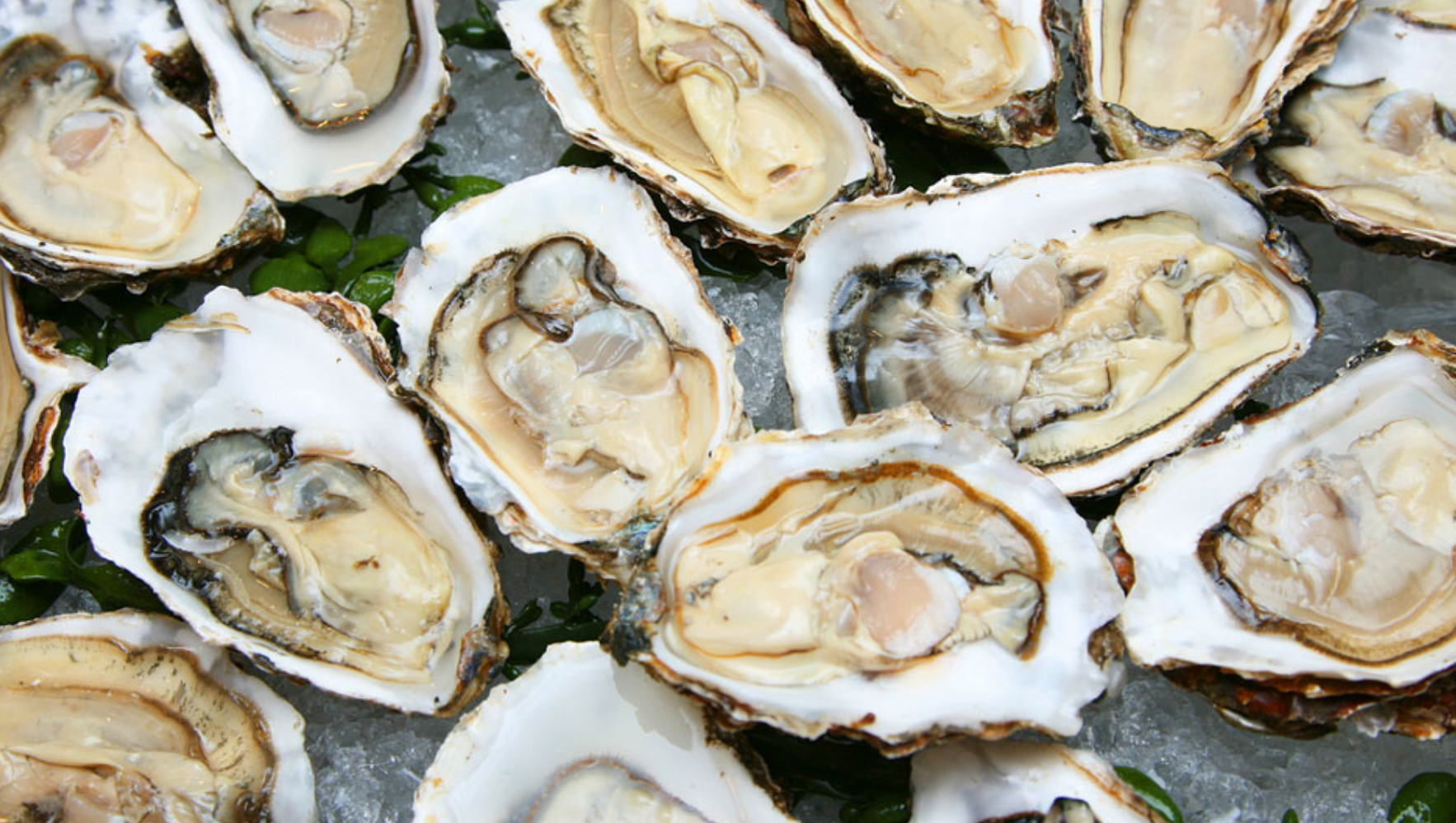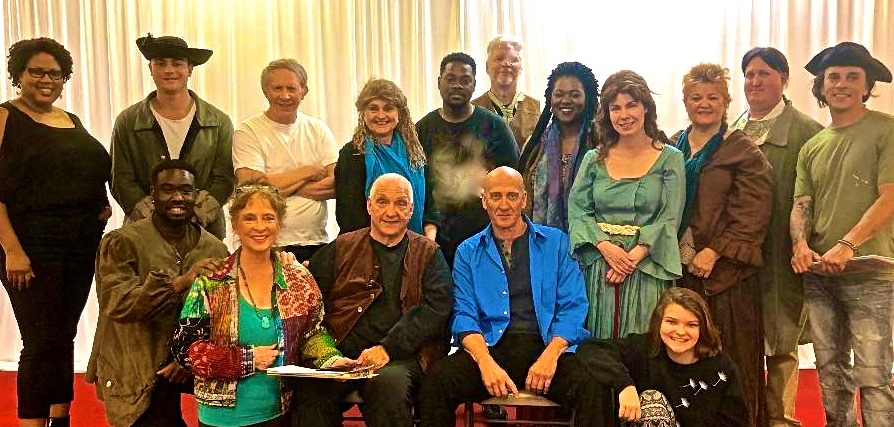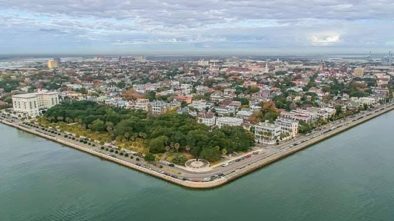Humanity’s Primal Connection to Oysters – From the History to the Nutritional Value of Oysters
By Kevin Joseph, Owner and Operator of Empire Oyster – Charleston, S.C.
Oysters literally saved our species in the wake of a dramatic and violent climate shift in a period, that ranged from about 200,000 to 100,000 years ago. The successful exploitation of oysters by early Homo Sapiens at that time contributed heavily to the survival, success and spread of our species. This episode is therefore a seminal part of the human origin story and remains an important part of our human experience today. Following is the brief history of how it happened, why it matters and what it says about our relationship with oysters, and each other, today.
“IT WAS A BOLD MAN WHO FIRST ATE AN OYSTER!” – Jonathan Swift
But was it a “bold man”? Certainly, it was not one in the times of Rome or in the time of Jonathan Swift, who is so often credited as the person who coined this famous and often cited expression. No, it happened long before that. Most certainly, it happened in Africa. And our modern civilization can thank that “bold human” directly for our survival and existence today.
Genetically, Homo Sapiens evolved into what we are today about 200,000 years ago. Not long thereafter, they survived the real threat of extinction caused by dramatic changes in the climate on Earth.
Dr. Rick Potts, Director of The Human Origins Program Smithsonian Institution, writes:
“BEGINNING 195,000 YEARS AGO, the global climate entered a period of cold and dry conditions, that lasted for 70,000 years. In interior Africa, this shift triggered drought conditions so severe, that much of the continent would have become uninhabitable. Genetic studies of modern human DNA tell us, that at some point during this period, human populations plummeted from more than 10,000 breeding individuals to as few as 600. Homo Sapiens became a highly endangered species; we almost went extinct. This “population bottleneck” means, that all humans alive today are descended from this tiny group of survivors. The result: Our species has less genetic diversity than a single troupe of West African chimpanzees.”

WELCOME TO THE OYSTERHOOD
So there we were, 100,000 BC (give or take a few millennia) with our backs to the wall, facing extinction. A growing desert, expanding south pushed a new species to the brink. As few as 600 Homo Sapiens were left alive. But this tiny, surviving population was forced into their own salvation when they found themselves on the southernmost tip of Africa. For the first time, humans took up residence beside the sea. And now, for the first time, there were oysters to eat.
This is a seminal moment in human history because when we began to exploit oysters, it was a moment that altered the course of human history forever. Fossil records indicate that oysters quickly became an incredibly important part of our diets. At first, they allowed us to survive. Ultimately, they allowed us to thrive. They changed us, for the better, in many ways. What occurred in a relatively brief span of time (25,000 – 50,000 years) was a miracle. A quantum leap in the fitness of Homo Sapiens occurred. A population exploded and expanded. The questions of how and why that was so and come to be understood follows.
A MIRACLE PROTEIN
The Homo Sapiens, who discovered and exploited oysters (and other shellfish) had many (and new) advantages and chances to survive and thrive, than their ancestors of 100,000 or 20,000 years prior. There are many reasons for this. First was the cost of this protein versus other protein, at that time. Oysters were a “cheap protein”. In this case, “cost” refers to the calories extended and casualties experienced in the hunting and gathering of protein. Chasing small or medium-sized animals reptiles, mammals and birds or collecting roots, nuts, berries, grubs, larvae and eggs in interior Africa was strenuous and dangerous. Prior to having oysters as a primary protein source human hunters were hunting and gathering in terrestrial environments. This put early humans in competition with and in the company of big cats, venomous snakes and many other dangers. But when they moved into caves on the sea coast, things changed.
Why would they hunt and gather exclusively in the hills and valleys above and behind them when they could more easily look to the sea for oysters when the tide went out? Hunting on land, for meat, was much more expensive. Danger literally surrounded you. This was not the case by the sea. Terrestrial hunting took many more calories, hours and, inevitably, many of the fittest hunters & gatherers of any given group were injured or even eaten in the process. As a source of protein oysters were a far easier, safer and faster way to eat better.
Oysters were everywhere and just outside their “door”. They needed only to walk around and collect them. Few, if any, predators were present and none were competing with them for this protein. Humans easily opened oysters with crude tools and fire. They consumed them in massive quantities as fossilized oyster middens in and around these caves have recently revealed. They were now getting more protein with a lot less effort and time, with much less danger and fewer casualties. Moreover, this protein was better for them (in many ways) than other forms of protein. The same is true today.

OYSTERS, THEY DID SOME BODIES GOOD!
As important as the volume of protein itself were the rare nutrients (like zinc, iodine and amino acids) which oysters are full of. Some of these nutrients (particularly iodine) are rather important to human organ health (especially the brain) and extremely rare in the diets of previous generations of inland African populations who could not exploit oysters.
As a result of the consumption of a protein that was superior nutritionally, ubiquitous and easy to procure, those populations who consumed oysters were truly blessed. Physically, they grew larger is size and stature. They became bigger, faster, stronger. Their skulls and brains grew as well. This allowed for additional and equally important mutations to occur. As their brains grew larger and stronger they functioned better. These people became better thinkers, tool-makers, problem-solvers and communicators. Finally, with less time spent hunting and gathering they had more time to think, wonder, create, communicate and nurture.
Oyster consuming populations became “alpha”. They dominated the gene pool. Their best and strongest hunters produced more food for their communities. Women had more time and resources to nurture their young. Infant mortality rates dropped. Individuals lived longer. Ultimately, their populations increased and their range expanded. As the climate warmed and got wetter, the Sahara receded. These larger, smarter populations were no longer “stuck”. They began to spread North, East and West from Africa into Europe and Asia. Once there they were better able to survive, thrive and expand ever further.
THE ART OF THE OYSTER
One could still argue that none of this separated those first few that consumed the first oysters from “the beasts”. Or those that followed them 10 generations later. I mean this figuratively. The earliest surviving populations were very primitive “people”. It was tens of thousands of years since their DNA was “primate” but they were not much like us, really, culturally. Descendants of these early populations were just bigger, stronger and smarter than they were 50,000 years before. And a bit more than that 25,000 years on from there. And so on. And there were a lot more of them 2,500 generations and 75,000 years later after those that first exploited the new resource. But were they what we’d call “human”? How, if at all, were these early populations exceptional? Did oysters have anything to do with that.
Recent paleo-anthropolicical research has done much to support the theory that oysters and shellfish were a singular reason for the success of Homo Sapiens as well as the exceptional-ism of certain groups of them. The simple fact that their skulls and brains grew supports the beginning of some kind of an exceptionalism. But where is the proof? Well, the writing was on the wall!

Many archeological excavations in the caves of Southern Africa have now proven the link between significant oyster and shellfish consumption and the first expressions of symbolism & art. We see the first red ocre paintings in the same (and so far, the only) caves we see large shellfish middens in. These caves were inhabited by the earliest known oyster-eating Homo Sapiens. So, it can be deduced, that those who first exploited oysters (and ate them most regularly) created the first known expressions of art. And therefore, culture.
This was the first giant step for mankind which took place over a very short time and coincides precisely with the discovery and exploitation of oysters. In a blink of an evolutionary eye, we now have an exceptional population totally distinct from any other Genus and even other Homo Sapien populations (if any survived). “All of a sudden”, we have a population with significant leisure time, tools, language, art and culture.
Art is an expression of complex thought, communication and symbolism common to more complex, organized and successful populations of humans. It is not found in animals. Art and culture is what separates man from beast (not tools or language as animals do often use tools and most certainly have “language”, even culture). Art combined with the ability to engage in symbolic, syntactic speech leads to the development of human awareness, identity and culture.
THE PROOF IS IN THE EVOLUTIONARY TREE
Recent paleo-anthropolicical research has done much to support the theory that oysters and shell sh were a singular reason for the success of that “bottlenecked population” of Homo Sapiens (and their ancestors) as well as the exceptionalism of Homo Sapiens. We are the only members of the Genus Homo to have exploited oysters. Period.
Current scholarship and research suggest that the coastal, cave-dwelling populations of Homo Sapiens, isolated there by a cold and expanding desert, had many advantages over other members of the Genus Homo that did not migrate south, to the coast. The oyster was one of these advantages. Oysters helped this population become better suited for success and survival. These humans became exceptional and they dominated the planet in the 100,000 since. They became, well, US!
The final supporting fact is simply this: Other species of the Genus Homo who were not lucky enough to exploit oysters (Heidelbergensis, Neaderthalensis, Erectus, Floresiensis, Rudolfensis and Habilus), well, they all became extinct even though they came much later. Neaderthalensis and Floresiensis may have interacted even bred with Homo Sapiens (there is some genetic evidence of this) but in the end, Homo Sapiens are the only survivors of the Genus Homo and the only one we know of who exploited oysters.

Source: http://donsmaps.com/hobbits ores.html
AN OYSTER IS FOREVER
Curtis W. Marean, a paleoanthropologist and the team leader and with the Institute of Human Origins at Arizona State University writes, “Shellfish was one of the last additions to the human diet before domesticated plants and animals were introduced more than 10,000 years ago (the dawn of agriculture). It is possible that this population could be the progenitor population for all modern humans.”
If this is true then it is possible that we can all trace our ancestry back to a tiny and isolated population of humans who were forced by climate change onto the top of Southern Africa only to discover oysters (over generations perhaps) as a useful path out of this evolutionary cul-de-sac. And that makes sense when we consider that there is in all humans, from every continent and every nation, from every epoch share the exact same genome. The benefit of hindsight and 10,000 years of “modern” science and research made possible by our new, big, brains allows us to see this oyster bond we have had with our earliest, toughest, smartest and perhaps luckiest ancestors has lasted, well, forever.
Just as it was then, it is still today. Better access to better food allows segments of human populations to thrive. But it gets better. In the past 4,000 of human history, another bond between humans can be traced through oysters. It is a common denominator that transcends race, nation, creed, creed, color and class. We have all consumed oysters. All of us still do. Granted, some more than others. But the rich and the poor of every nation, on every continent, have consumed oysters (both cooked and raw) on every continent since we discovered them.
Simple tools and beads created by oyster consuming early Homo Sapiens of Southern Africa.
As we always have, when we eat oysters we feel blessed, rich, nourished and connected in a way that we can feel a sense of gratitude for. Oyster consumption then marks a turning point in the history of our species and our planet. It created a bond between all Homo Sapiens that proves eternal (so far). This is our primal connection to oysters. This is the oyster’s singular role in history and humanity.
K.I.S.S. – KEEP IT SIMPLE SAPIENS
If oysters helped make certain early Homo Sapiens exceptional from a biological and neurological standpoint it would follow that they make modern humans feel exceptional culturally, emotionally and even spiritually. I would suggest that eating oysters also makes us feel more human. They make us feel more alive. They tie us to our survival as a species. We channel that fact every time we eat an oyster. It is metaphysical.
But could oysters be part of a solution to the problems humanity faces today? Are we not confronted by climate change issues now as we were then. Whether natural, man-made or accelerated by man, the climate IS changing. It IS warming. What this will mean for our ability to thrive or even survive is yet to be agreed upon. Regardless, it does not bode well for a great many places or people…or oysters.
These are immutable, measurable material facts. Whatever the causes, ocean levels ARE rising. Oceans and bays are more acidic, warmer, more hypoxic, less diverse and less productive. Many are dying. Many are dead. Most are threatened. We have lost and are losing habitat and ecosystems (particularly coastal, estuarine ecosystems) at an alarming rate. Oysters are a cornerstone species in those ecosystems. Healthy oyster populations (wild or farmed) allow many other species to live and ecosystems to survive and thrive. Humans are dependent on the health and diversity of these ecosystems for our climate, foods (wild and domesticated) and survival.
More and more of us are understanding oysters as a cornerstone species and oyster farming to be a way to create more organisms whose existence supports healthier and more diverse ecosystems. We are witness to the growth and strengthening of bonds between those who love oysters, between those who value sustainable, responsible & beneficial aquaculture.
We are recognizing and appreciating oysters not just as food but also as a way to:
- Live and eat in ways that make us feel good, strong, nourished and inspired…
- Create new jobs, protect lifestyles and the culture for those who’ve made a life and a living from the sea…
- Support sustainable and ecologically beneficial forms of food production…
- Improve water quality and foster greater biodiversity…
- Provide solutions to restore, protect and preserve coastlines and estuarine environments which:
- is where much of the seafood we eat depends upon and spends a great deal of its life in…
- are the most biodiverse zones on earth…
- protect coastal populations and infrastructure from storm surges and flooding.
Homo Sapien translates to “Wise Man”. Are oysters Wise Man’s answer, again? Maybe doing what saved us before is the correct way to protect our species once more. Perhaps cultivating oysters and creating additional value in their consumption is a path to salvation or part of the solution. That seems a wise path as the first populations that originally exploited wild oysters became exceptional. They became alpha. And as in any population of any organism, alpha genes survive, win, thrive and spread. Any current or future population is a result of the success of the alpha specimens of its ancestors. In all evolved species, the smartest and strongest individuals provide for and lead those they love to greater opportunities
I’ve built a life and a career around this theory before I even understood it before I could articulate it. My mantra for some time now has been “Live on purpose. Make a living by making a difference.” Oysters, it occurred to me some time ago, were the best way for me to accomplish all of that. Oysters involve nature, science, history, culture, cuisine and hospitality: the things I love most. My oyster advocacy allows me to deliver a message about environmental stewardship without preaching, blaming or being dismissed as a “tree-hugging, liberal, hippie” or climate change alarmist.
MY MESSAGE IS SIMPLE:
“You like these delicious oysters? Great! So let’s protect, where they come from and reward those, who bring them to us fairly – so we don’t lose oysters forever.” I aim to build value in oysters, because I know, they are great for both – our bodies and the ecosystems – and communities depend on them. Oh, and because they saved us once before. I leverage our primal connection to oysters for a future where oysters and Homo Sapiens continue to benefit from one another.


